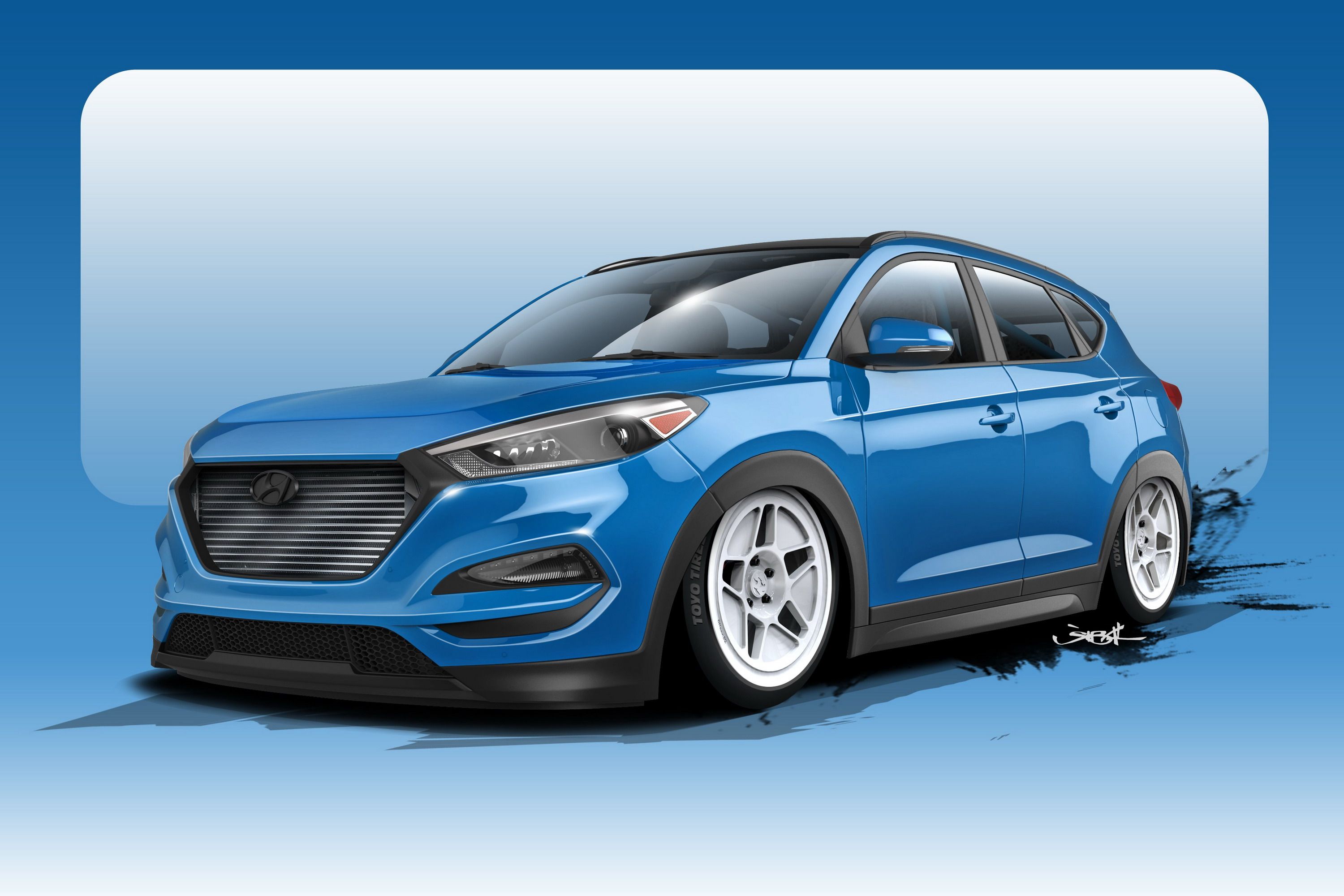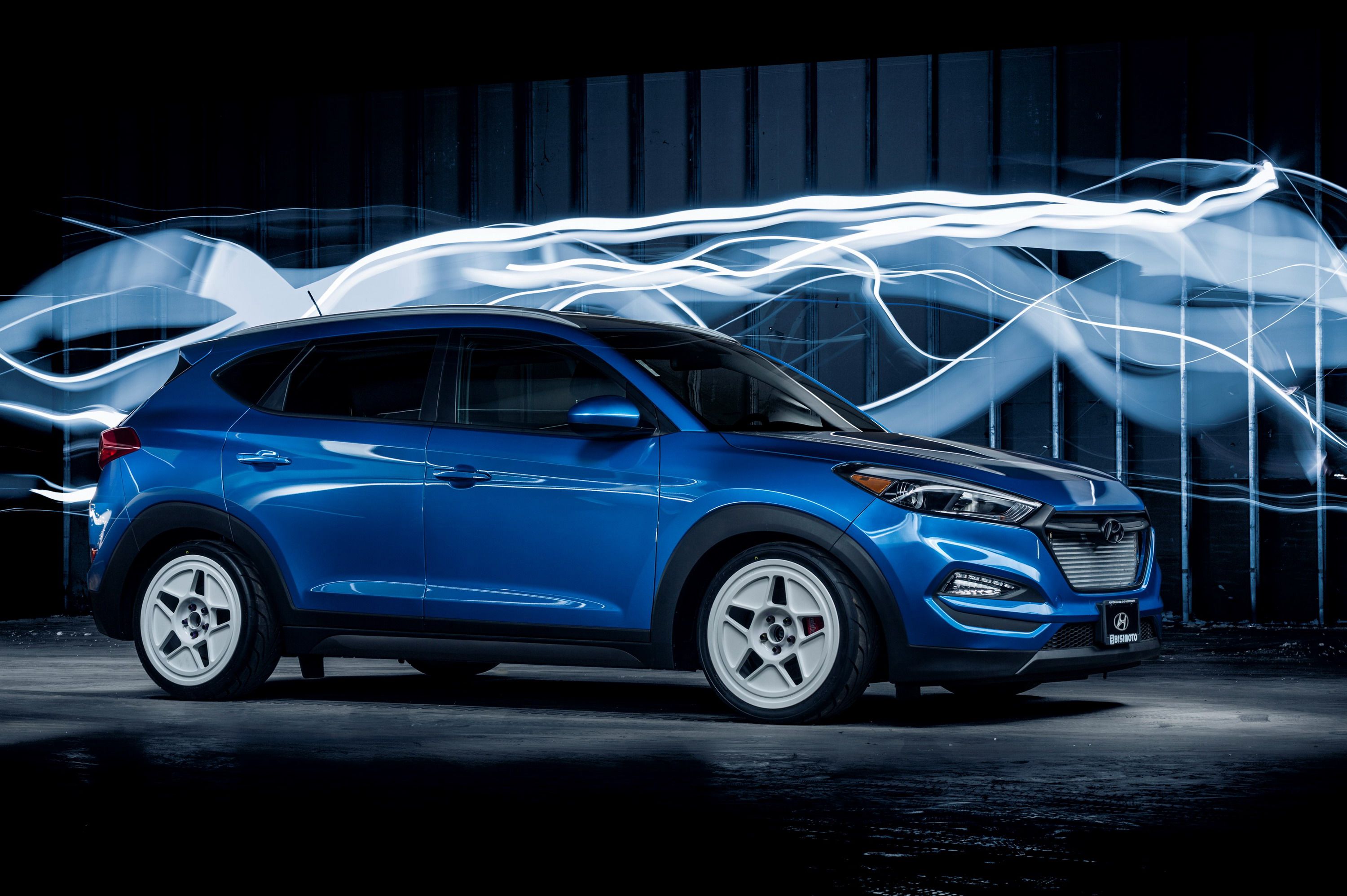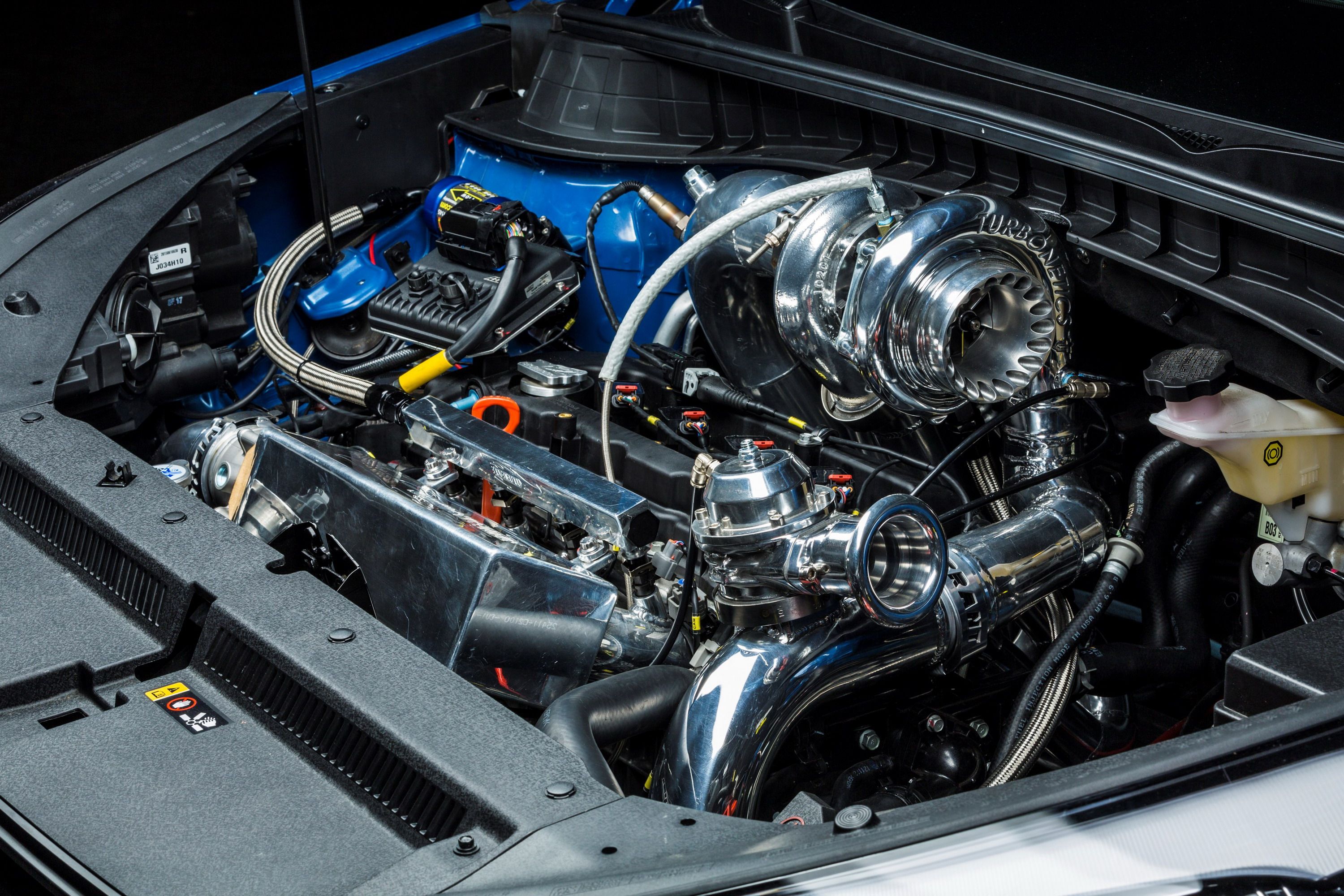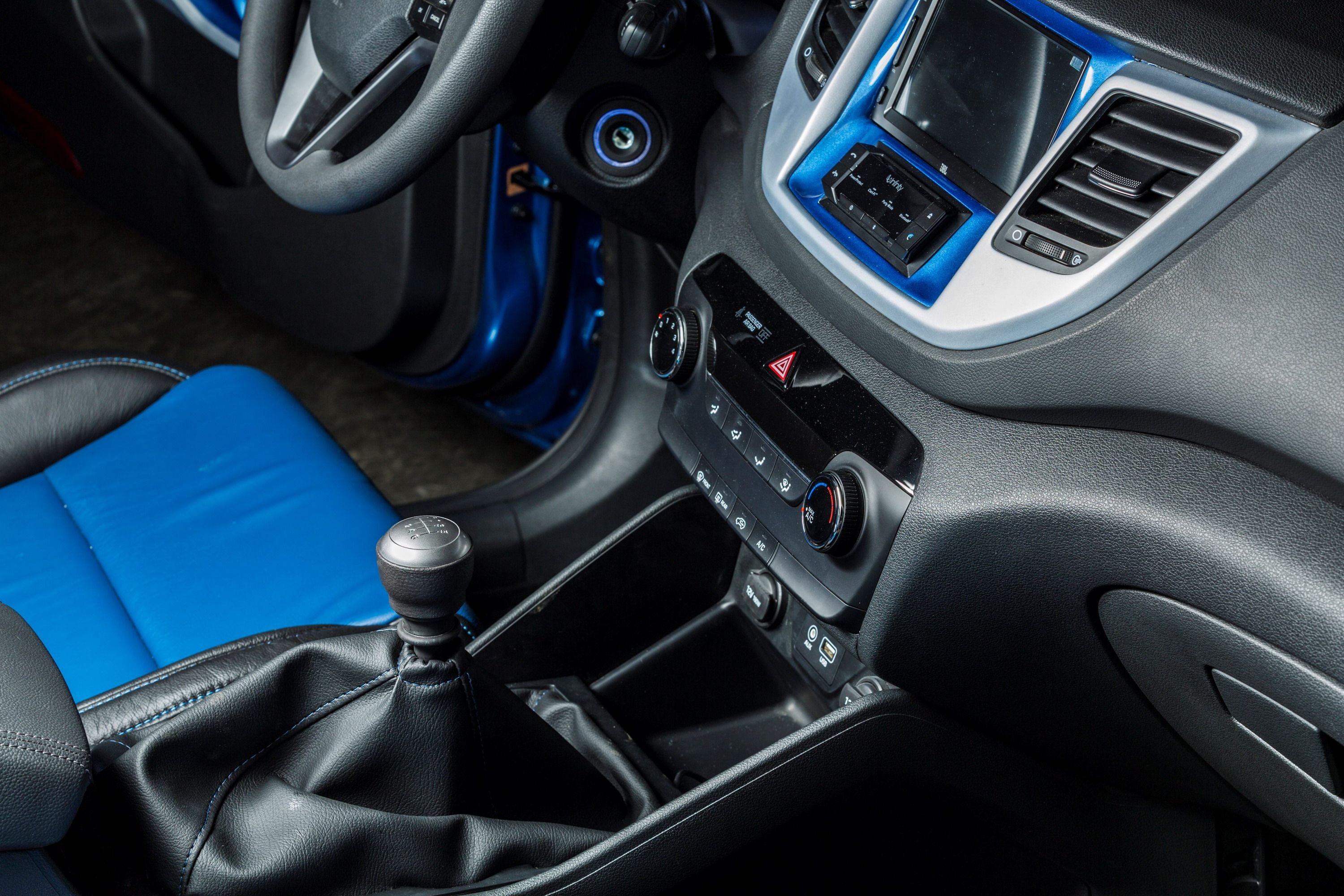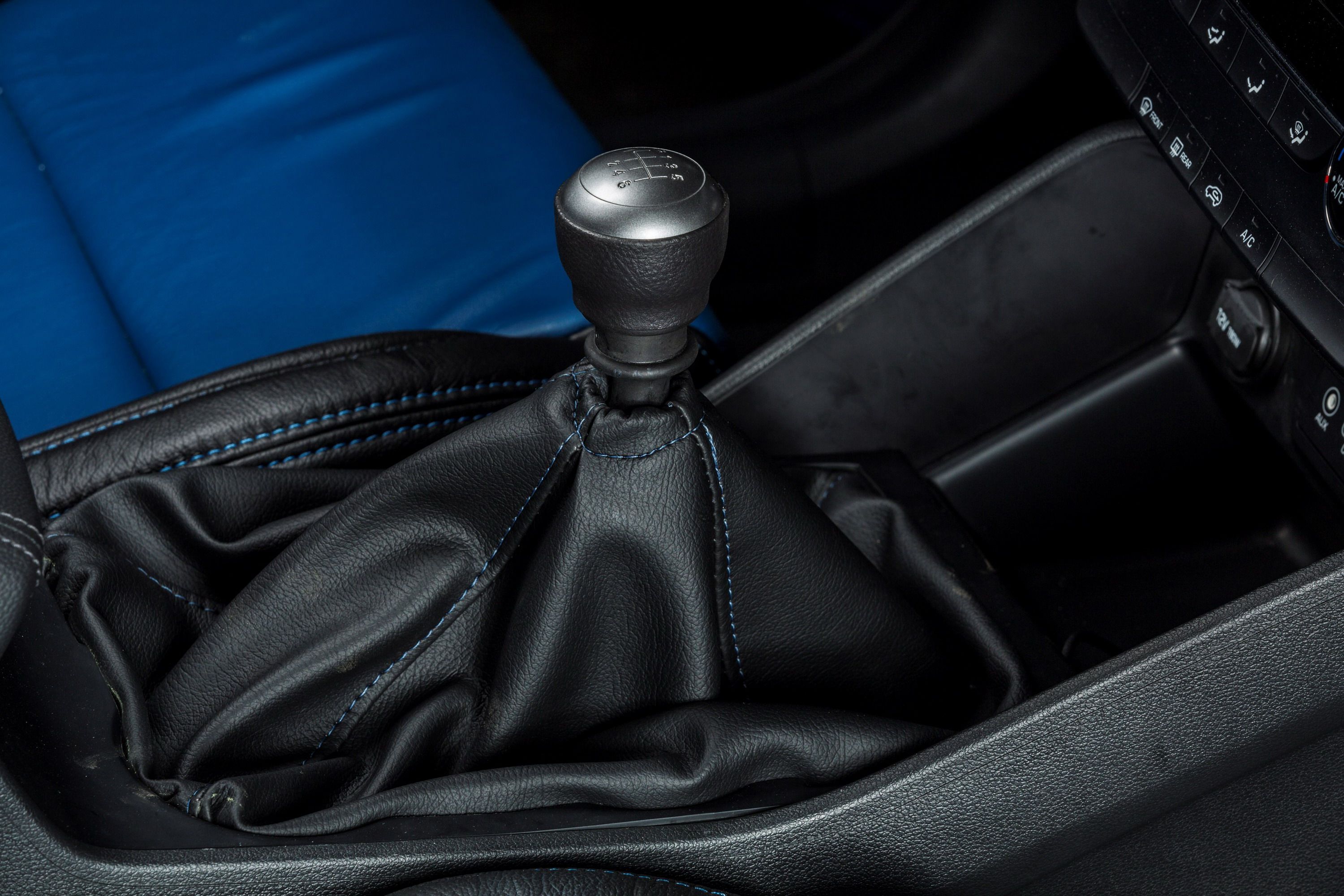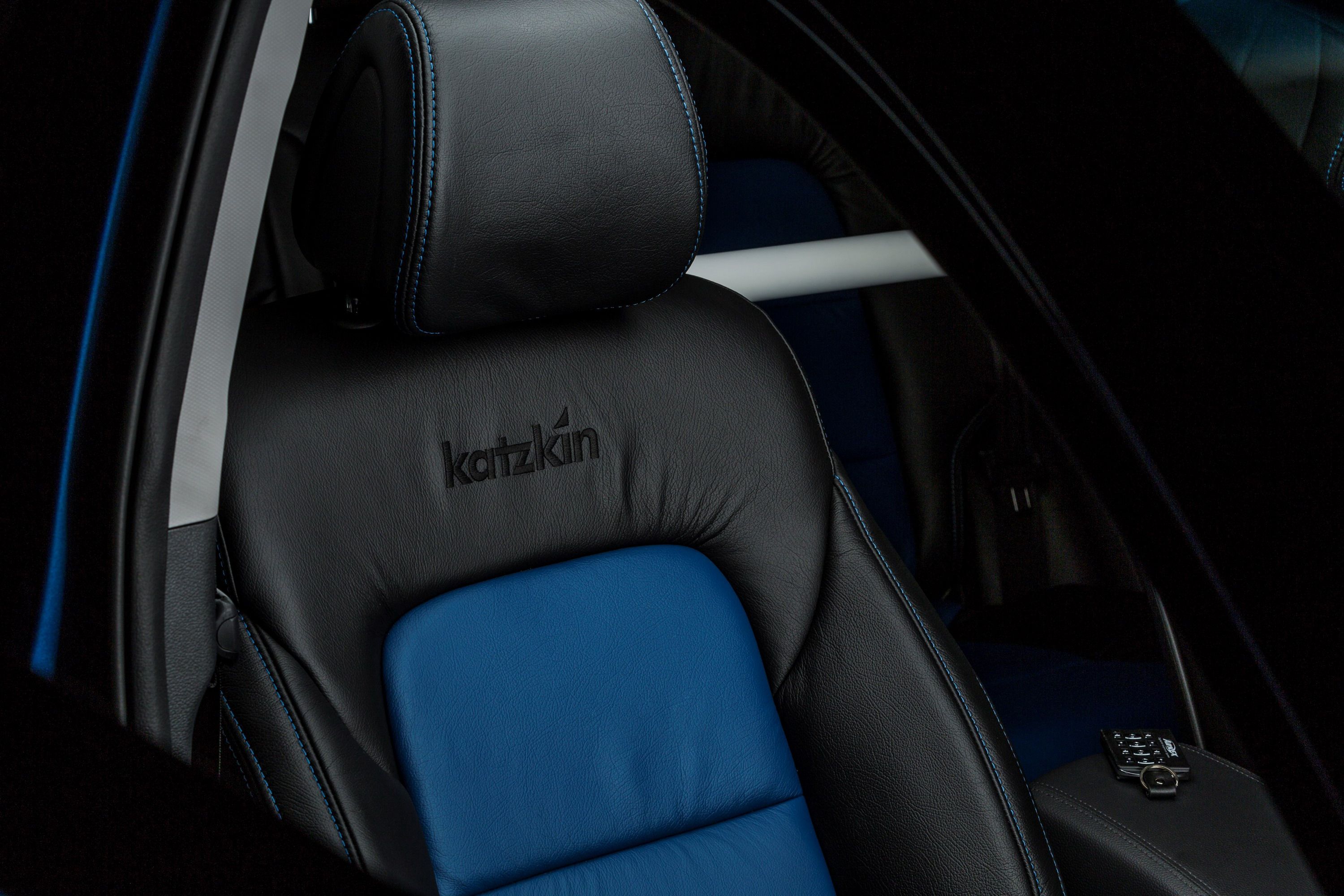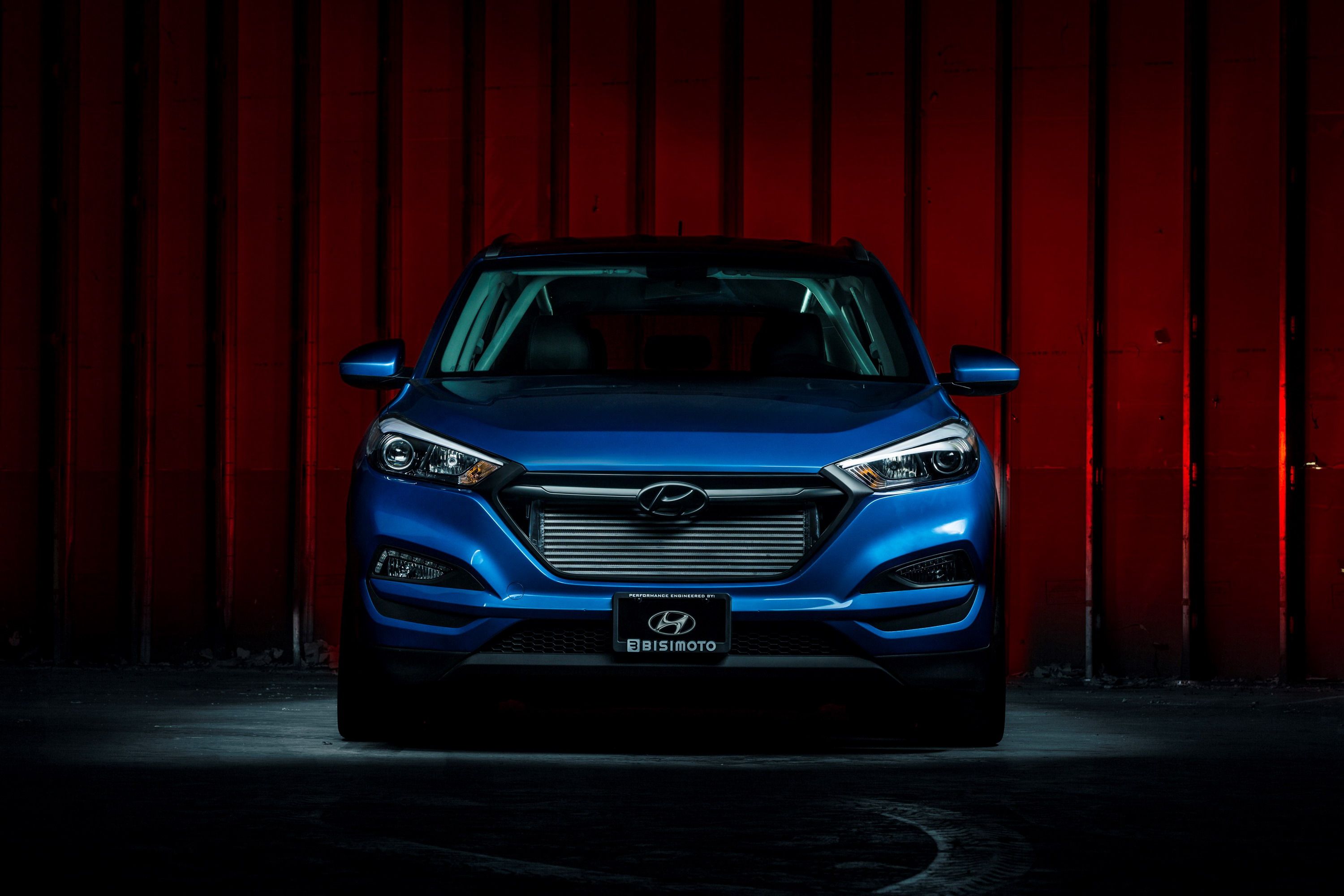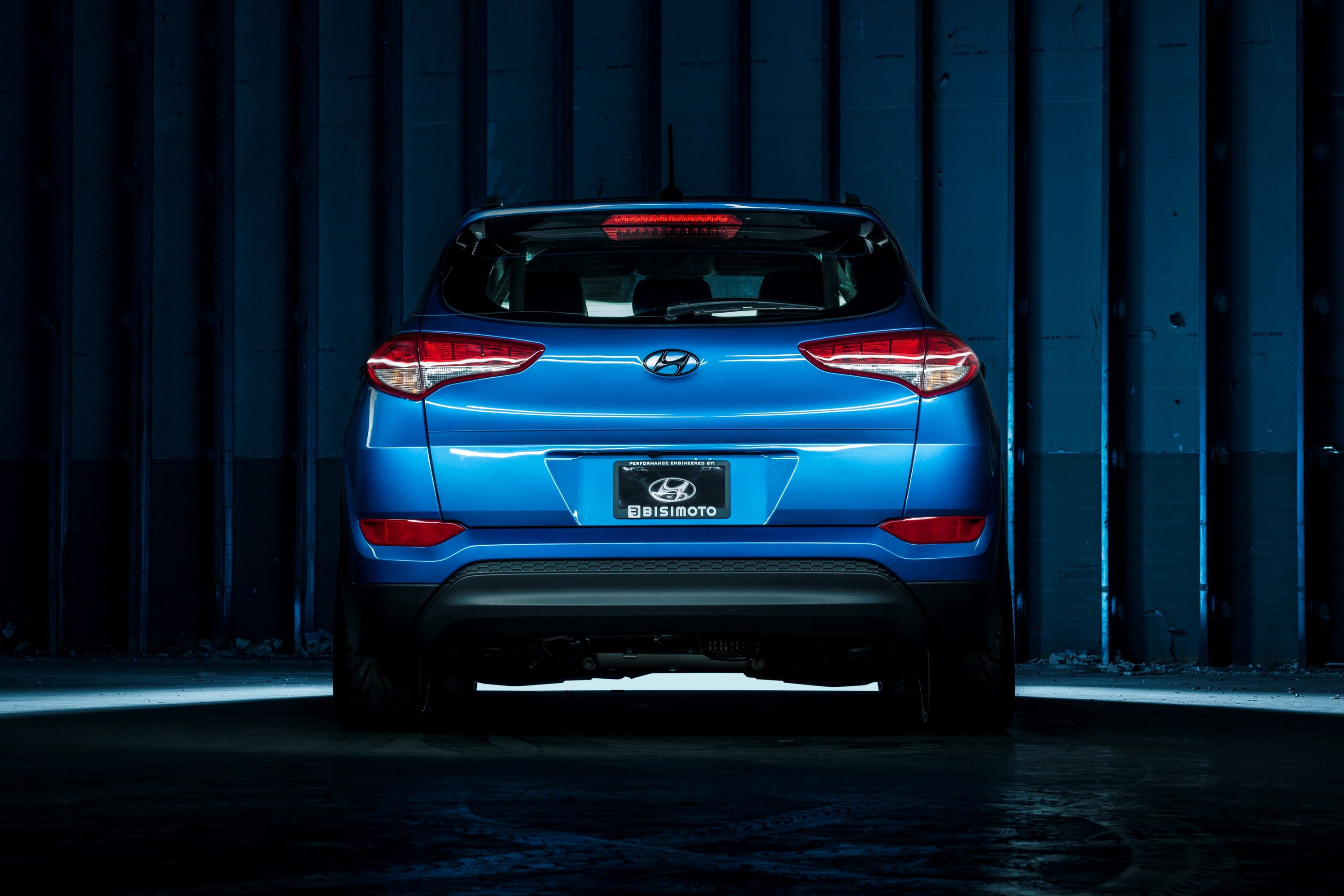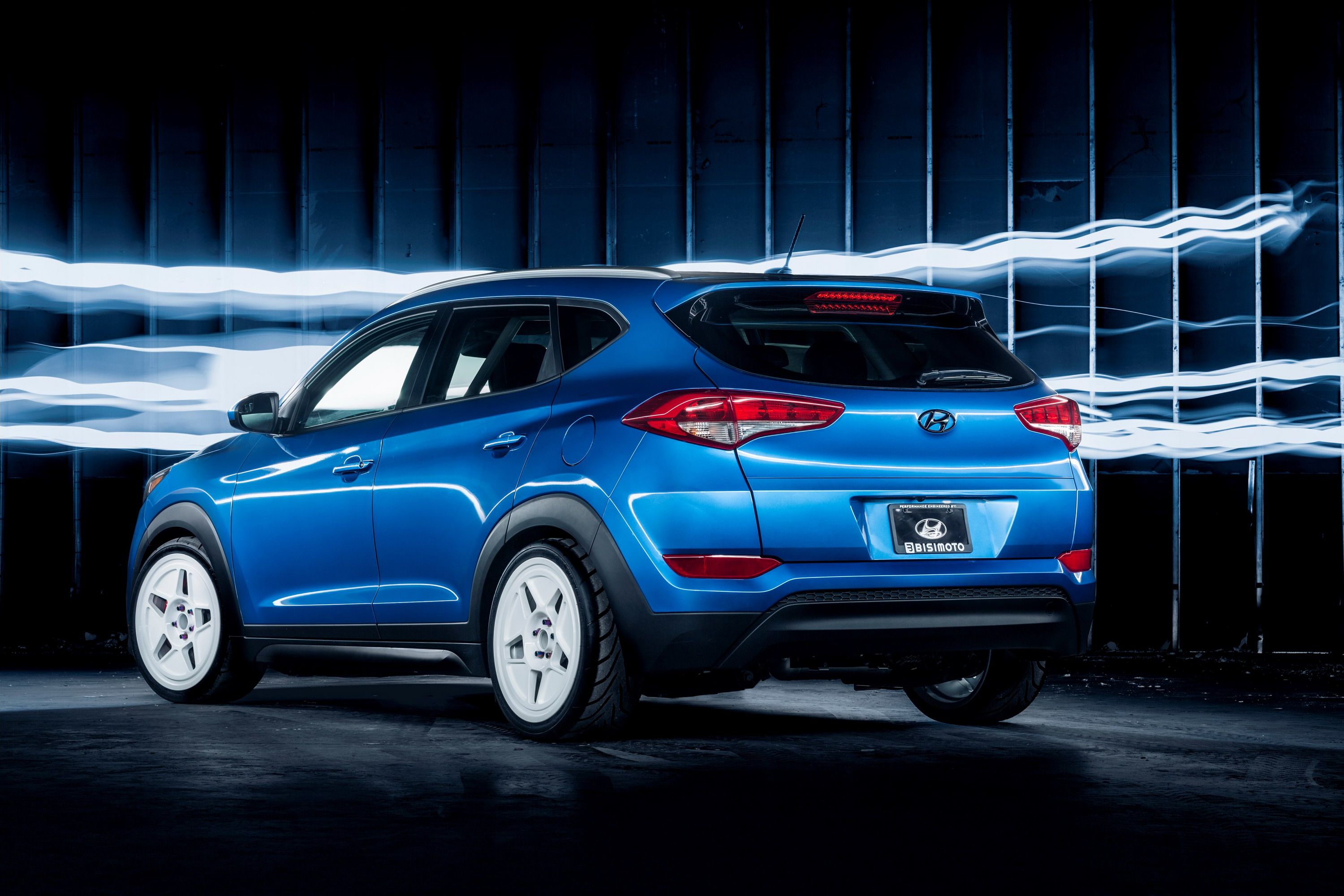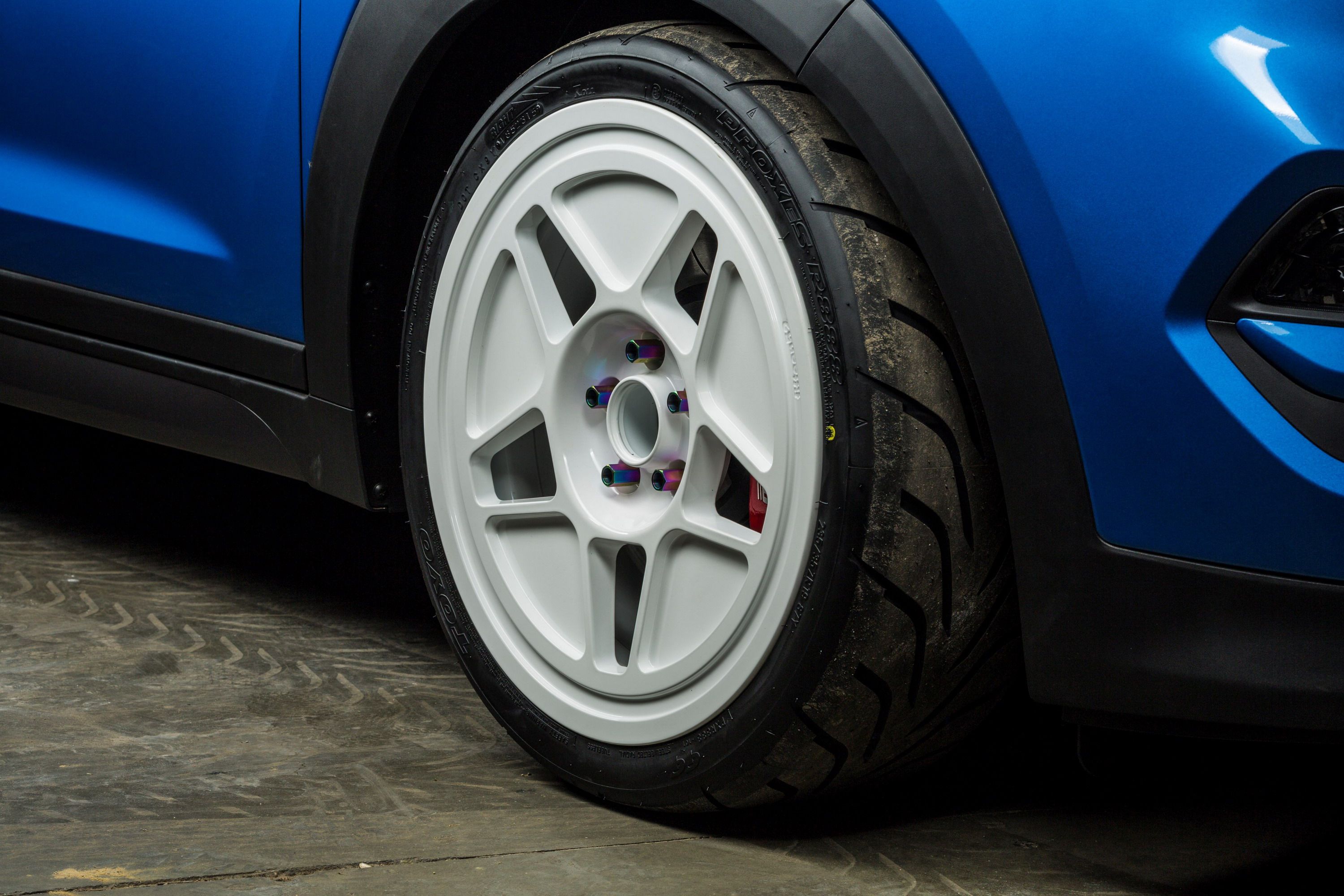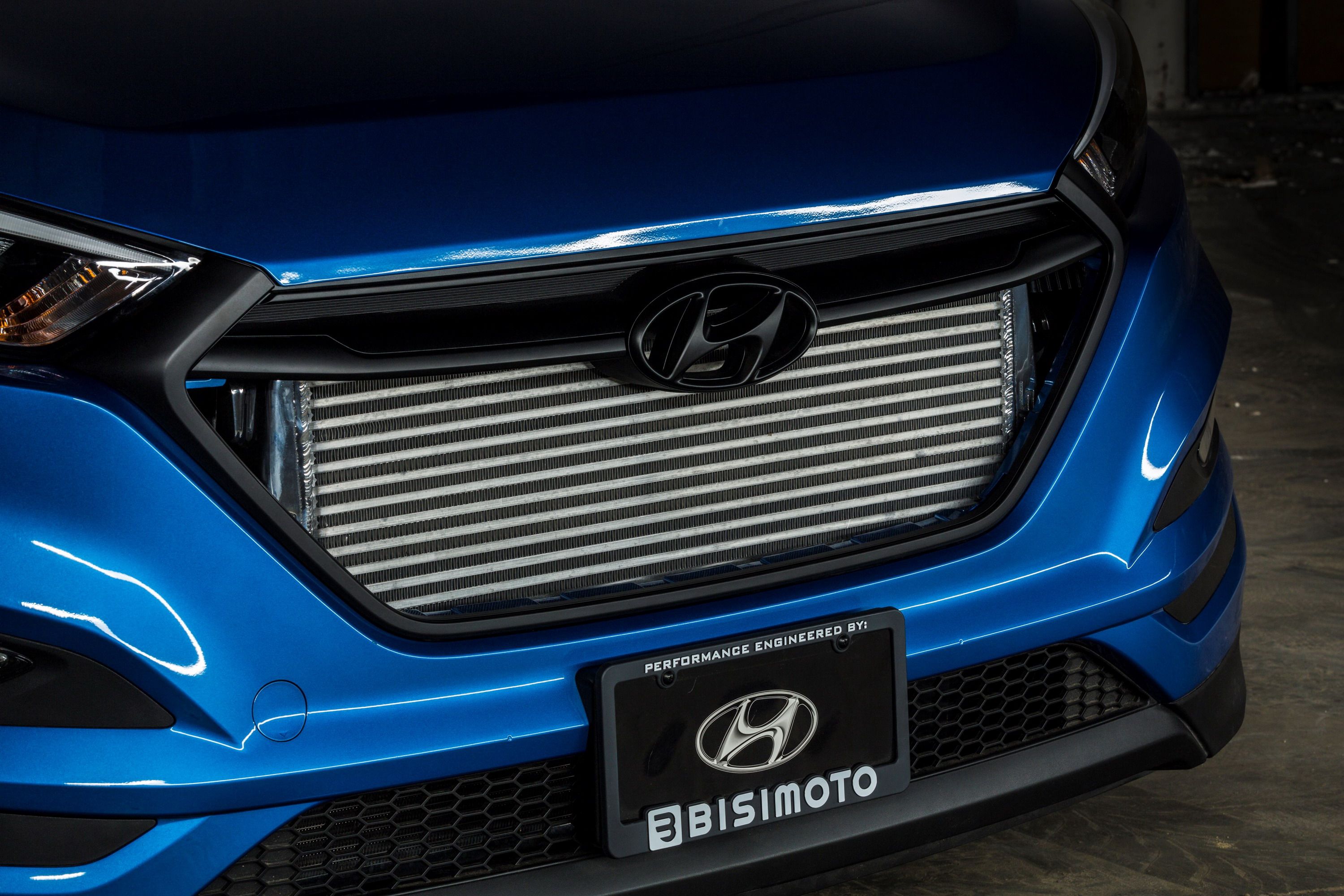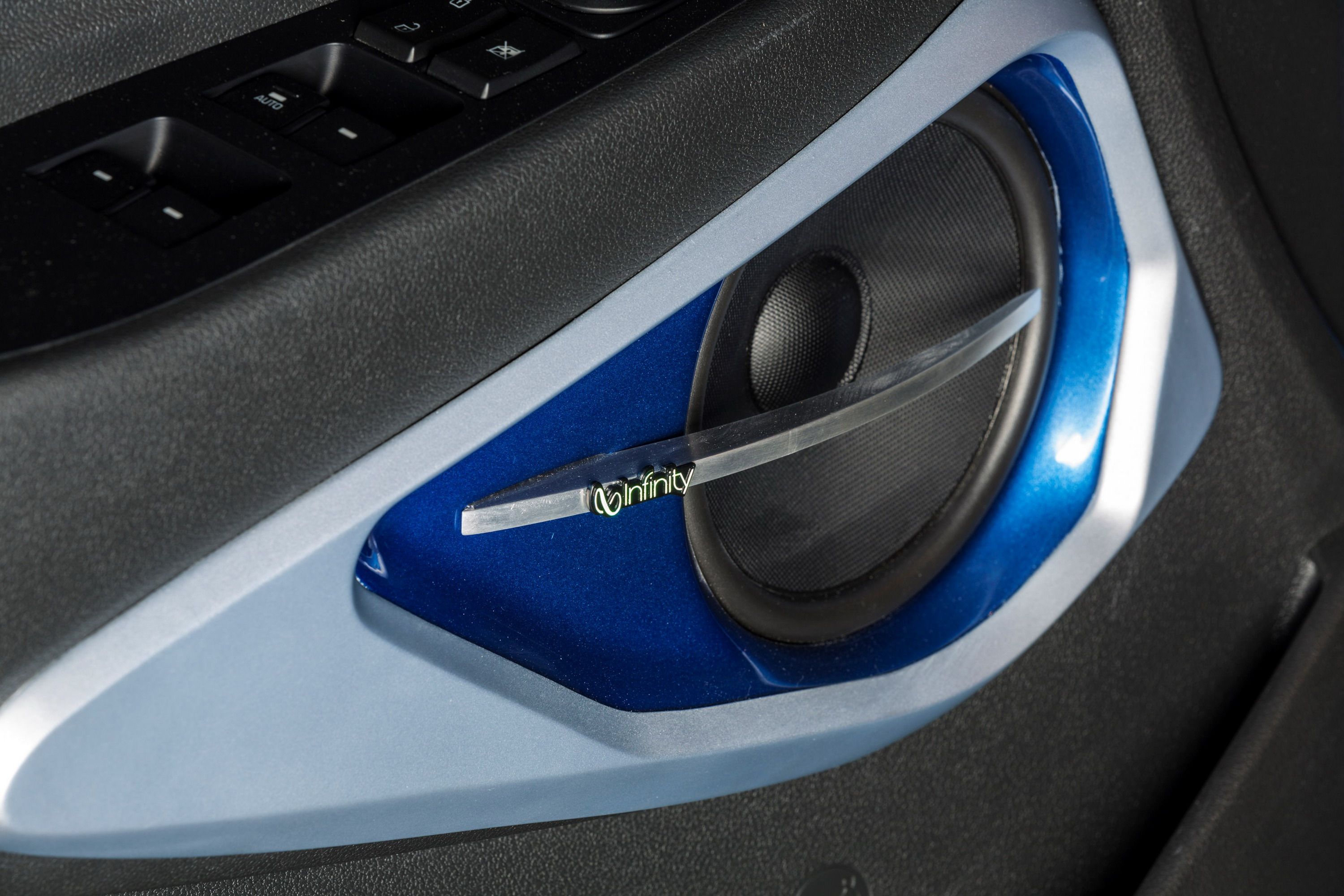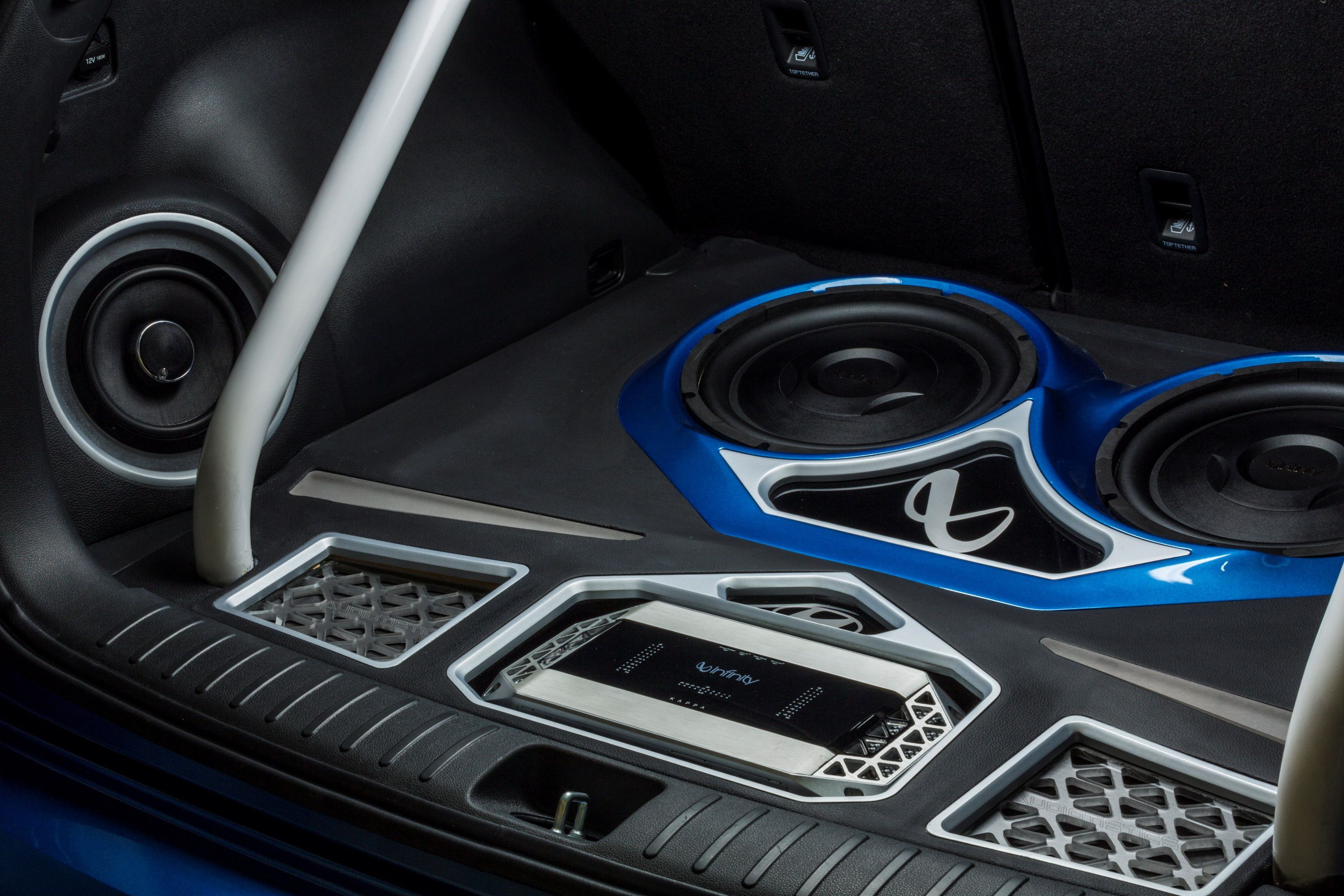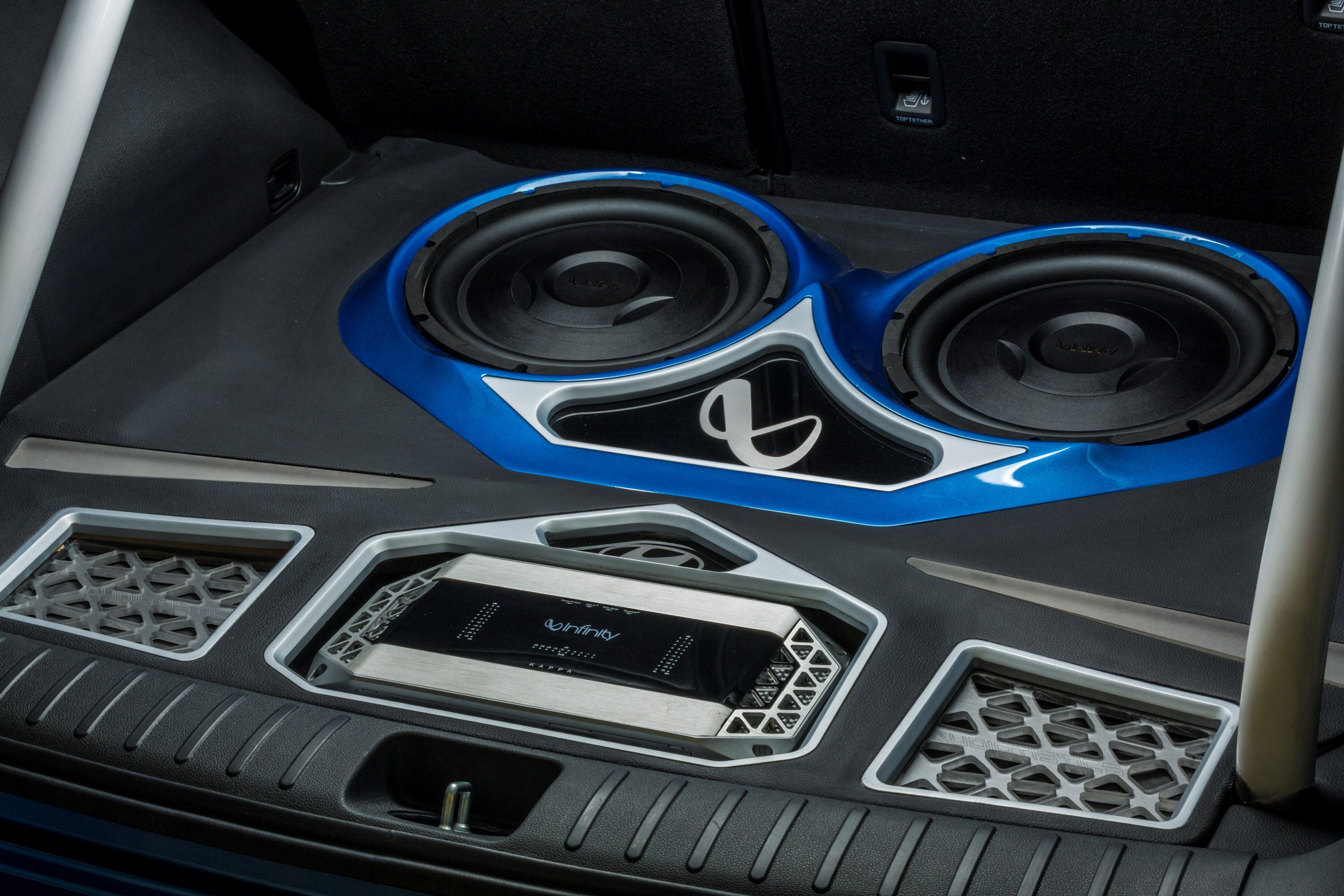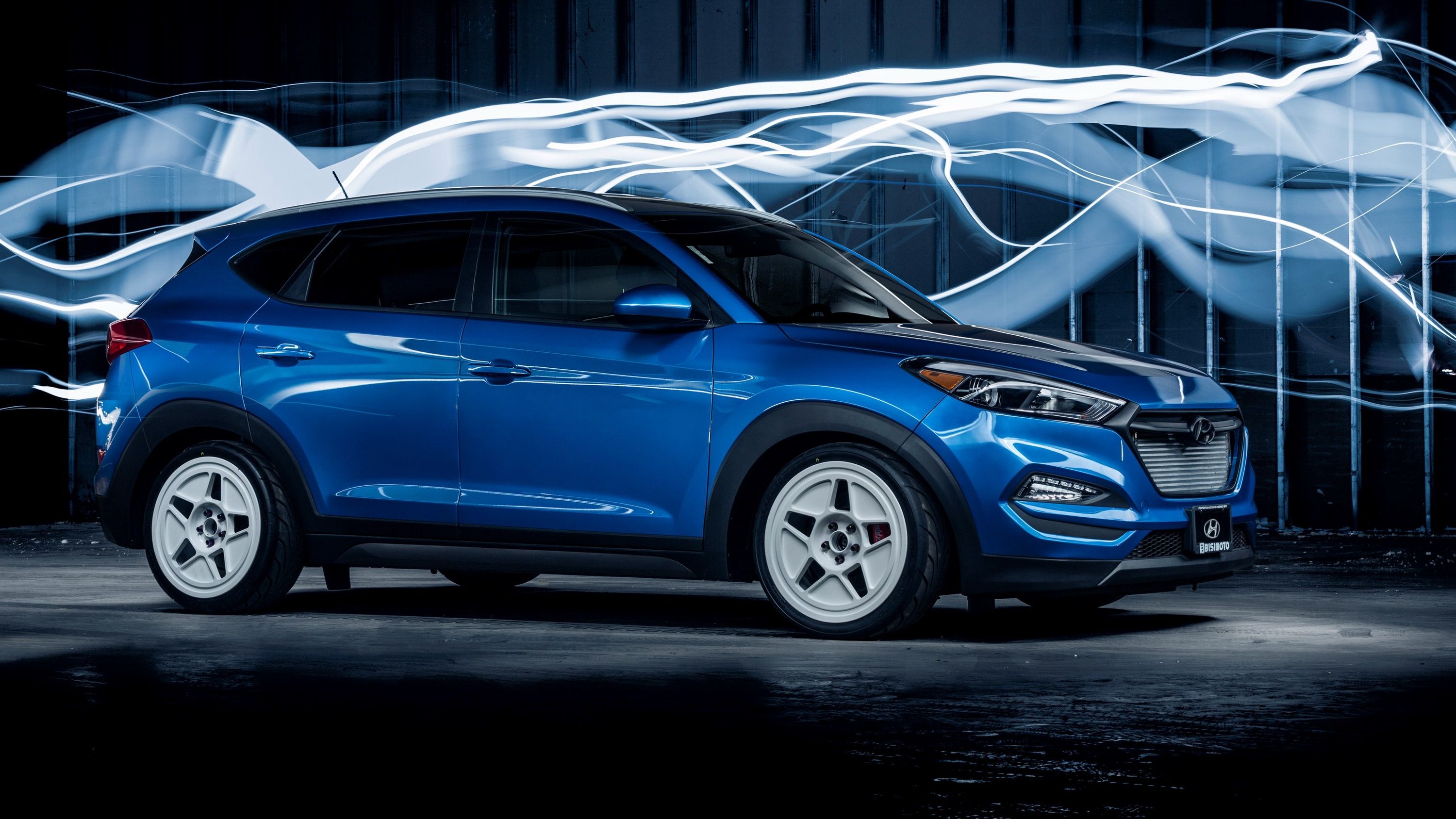Building the most powerful Hyundai Tucson->ke3245 ever probably isn’t on many bucket lists. That doesn’t matter though, because 2015 SEMA->ke216 is right around the corner, and it’s a place where common sense is politely asked to go straight to the back of the bus. For the fourth straight year, Bisimoto has partnered with Hyundai->ke201 to create an unlikely performance monster. This year, it’s the new 2016 Hyundai Tucson going under the knife.
The popularity of crossovers->ke288 is expected to lead naturally to modified crossovers, and this year’s auto show season is already jumping on that particular bandwagon, with a number of sporty and hot-rodded crossover concepts debuting in Frankfurt. SEMA is shaping up to be a similar party, if the Bisimoto Tucson is any indicator. Hyundai gave the tuner, whose usual medium is Porsches->ke1, free rein to play with the all-new 2016 Tucson, and the result is pretty impressive and possibly a shot across the bow of the Nissan Juke-R. Race-bred engine components are used to triple the Tucson's standard output, and Bisimoto says that it's sturdy enough to be a real-world driver, unlike some one-offs that are tuned to within an inch of detonation. Some wild body modifications are on hand to eliminate any chance that the Bisimoto Tucson would be considered a "sleeper."
Updated 11/04/2015: The new Hyundai Tucson By Bisimoto Engineering made its debut at the 2015 SEMA Show.
Continue reading to learn more about the 2016 Hyundai Tucson By Bisimoto Engineering.
hyundai-tucson-by-bisimoto-engineering
- Make: Array
- Model: hyundai-tucson-by-bisimoto-engineering
2016 Hyundai Tucson By Bisimoto Engineering
- Make: Array
- Model: 2016 Hyundai Tucson By Bisimoto Engineering
- Horsepower: 700
- Transmission: six-speed manual
- [do not use] Vehicle Model: Array
Exterior
It's clear from the teaser art that this will be no ordinary Tucson. The little crossover's been slapped down hard on the suspension, with white-painted wheels crammed into the wheel wells. An aero kit further lowers the vehicle. The grille has been replaced by an intake for the intercooler. In performance-car terms, this one looks the business.
Interior
The interior's dominated by a custom-built, four-point roll cage. The dash has been tweaked by Racepak, Bisimoto installed leather upholstery, and it wouldn't be a proper SEMA show car without a proper sound system of course, so a 650-watt Harman Kardon Infinity audio system is also along for the ride.
Drivetrain
Bisimoto has experience modifying Hyundai's 2.4 liter four-cylinder engine, so it hopped one up and then crammed it into the Tucson, which is normally only available with the 2.0 liter four. The engine's internals have been dramatically beefed up to handle a high-boost Turbonetics turbocharger, and the mods include high-compression pistons, stronger head studs and bolts, a Bisimoto camshaft and exhaust, a high-flow fuel pump and custom fuel rail. After all that work, the Bisimoto Tucson is pushing over 700 horsepower. (Even Hyundai calls this output "absurd.") A six-speed manual transmission with a Spec Stage 5 clutch gets the power to the road. The engine management system is mapped with real-world driving in mind, and the Bisimoto Tucson is even flex-fuel capable.
An airbag suspension replaces the Tucson's fully independent setup, and the 19 x 8.5-inch wheels are borrowed from a race car. The brakes have been upgraded to four-piston calipers, to give the Bisimoto Tucson a hope of stopping from the absurd speeds it's almost certainly capable of.
Conclusion
The 2011 Nissan Juke-R has proved that there's a market, albeit a small, lunatic-fringey one, for ridiculously fast compact crossover vehicles. Hyundai hasn't announced any plans to produce a dramatically hot-rodded Tucson, but then neither did Nissan -- the Juke-R ended up in limited production because it was just awesome. Once it debuts at SEMA, we'll see if the Bisimoto Tucson offers that kind of awesome, too.

